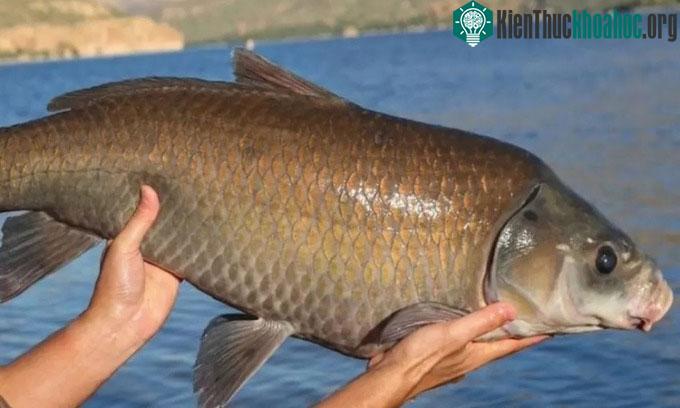Researchers discovered that many individuals of three species of buffalo fish have survived from 1918 to the present, likely due to isolated environments and evolutionary adaptations.
Fish can be found in oases, streams or other bodies of water in the desert, often living in isolated and special circumstances that allow them to adapt to harsh environments. The study published in the journal Scientific Reports focused on fish species living in Apache Lake in the southwestern Arizona desert, including largemouth buffalofish, smallmouth buffalofish and black buffalofish. These fish species are members of the Ictiobus genus, according to Alec Lackmann , ichthyologist and study co-author, Interesting Engineering reported on November 5.

A buffalo fish has lived for a century in Apache LakeA buffalo fish has lived for a century in Apache Lake. (Photo: University of Minnesota Duluth)
To determine the age of the buffalo fish, the research team took otoliths inside the fish’s skull. Otoliths are tiny, rock-like structures that grow continuously throughout the fish’s life, adding a new layer each year. Scientists can measure the age of fish through analyzing otoliths with a dual microscope and counting the number of layers like tree rings. The discovery revealed that some buffalo fish introduced to Arizona in 1918 are likely still alive today.
“Originally raised in breeding farms and ponds along the Mississippi River in the Midwest, the government stored buffalo fish in Roosevelt Lake (upstream of Apache Lake), Arizona in 1918,” the research team said .
Roosevelt Lake became a commercial fishery over time, but the fish population in Apache Lake was largely unaffected. Recently, fishermen have found an effective way to catch buffalo fish in Apache Lake using poles and fishing lines. Some catch-and-release fishermen began to notice unusual black and orange spots on the fish they caught, spurring efforts to study this type of pattern. They contacted Lackmann to conduct scientific analysis of several fish species, eventually finding out the lifespan of freshwater fish in desert lakes.
The long lifespan of buffalo fish challenges understanding of vertebrate aging, raising questions about the underlying mechanisms. Researchers are trying to determine whether the buffalofish’s remarkable longevity results from unique environments and evolutionary adaptations.




